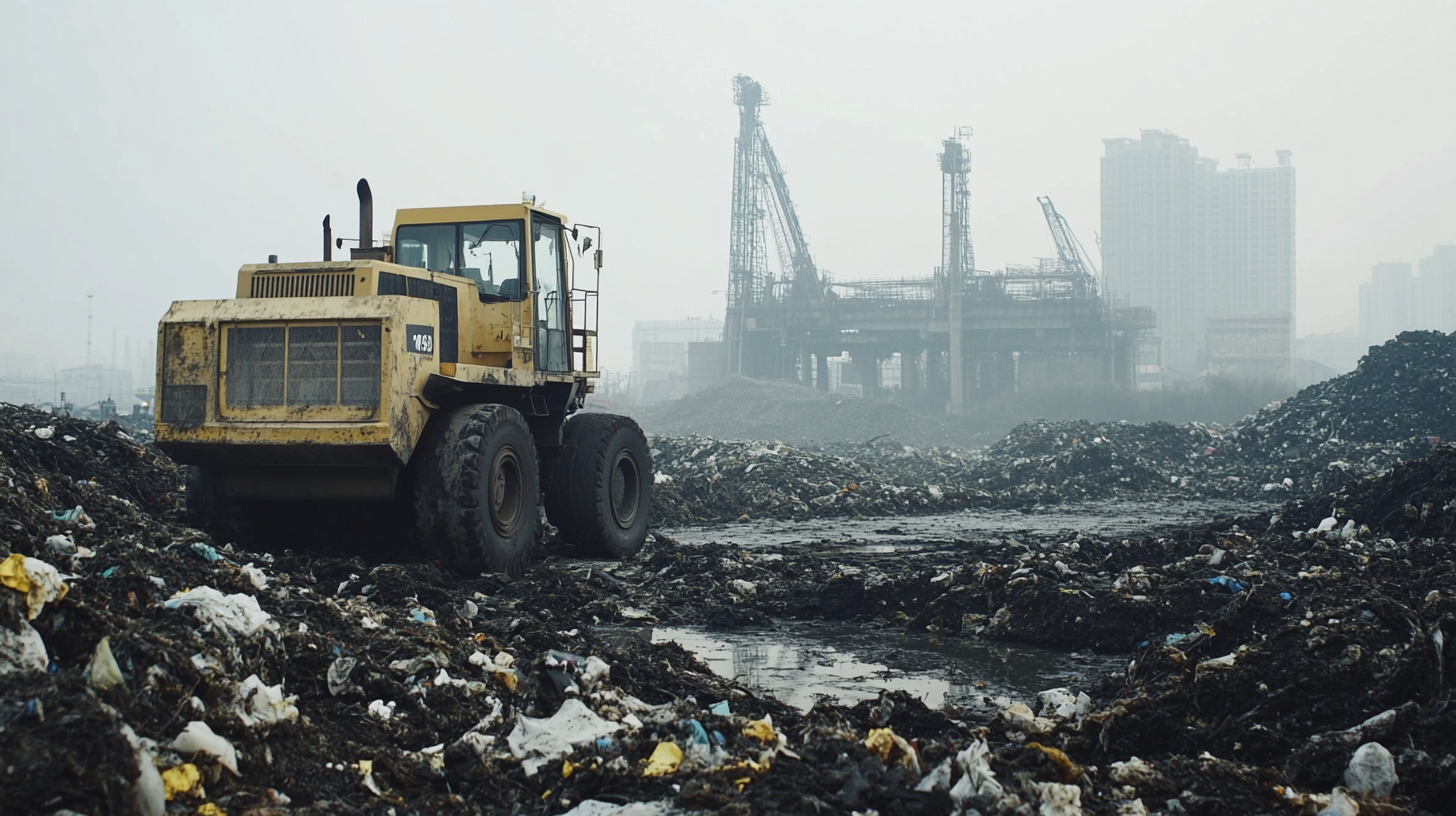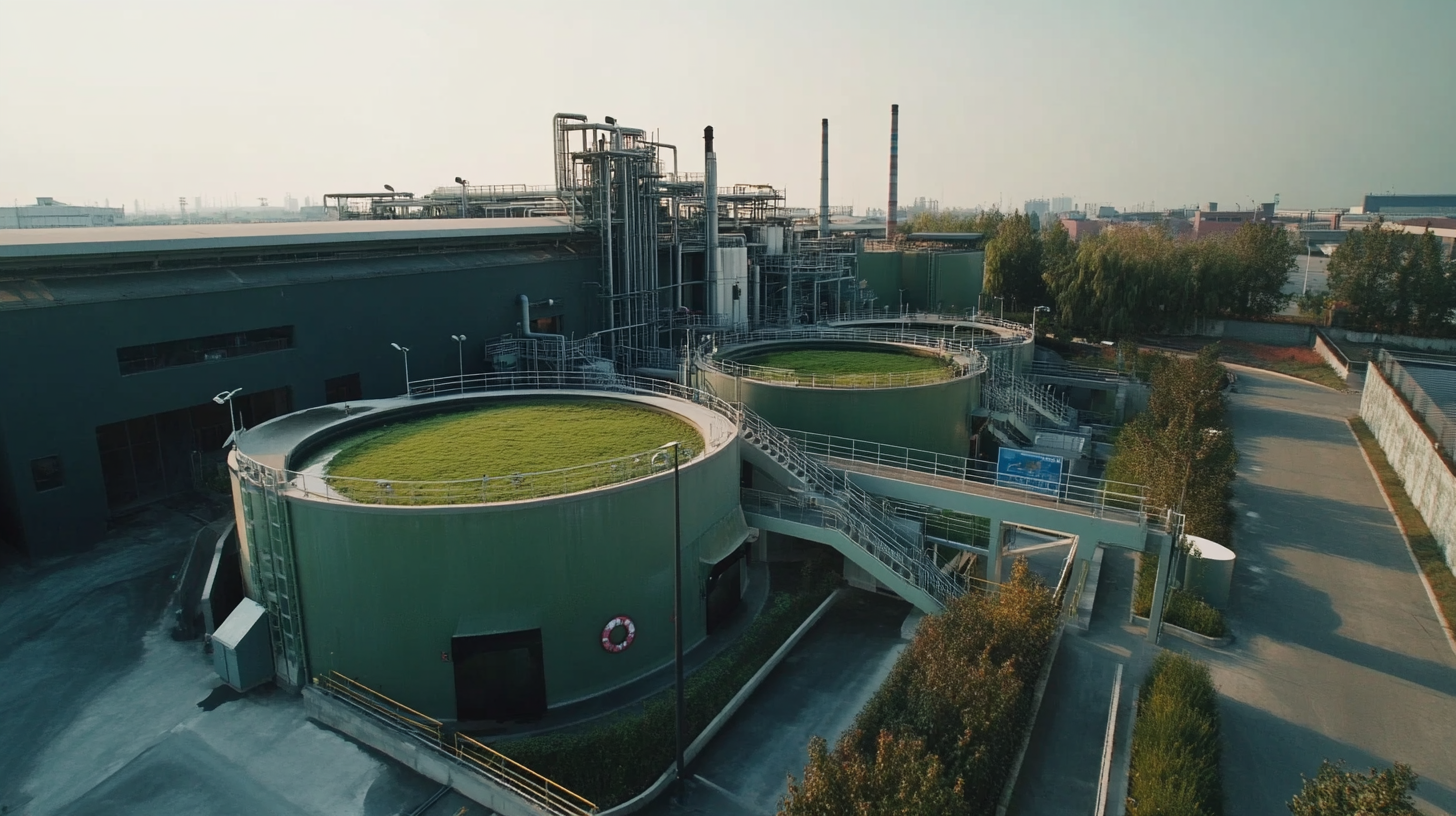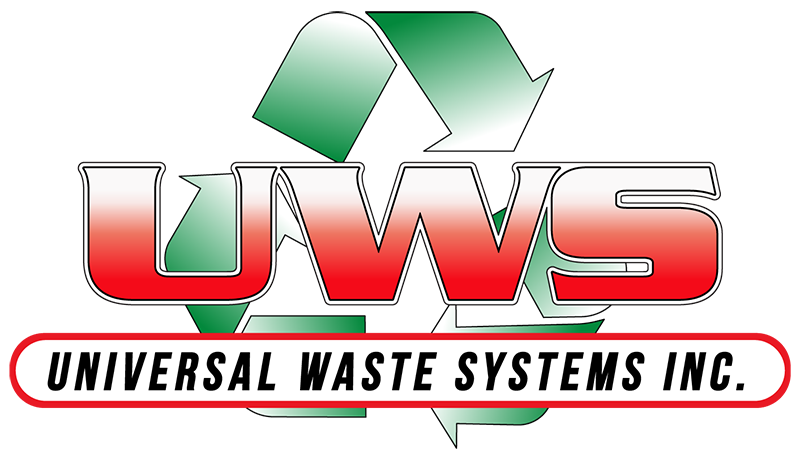Blog
Elevating Global Standards with China's Best Green Waste Facility Solutions
As the world grapples with escalating waste management challenges, the importance of innovative solutions becomes increasingly evident. In 2022 alone, global organic waste generation reached approximately 2.01 billion metric tons, with a projected increase of 25% by 2030 according to a report by the Food and Agriculture Organization (FAO). This alarming trend emphasizes the urgent need for effective Green Waste Facility solutions, particularly in rapidly developing regions like China where urbanization has intensified waste streams. China is now at the forefront of advancing global standards in waste management, leveraging cutting-edge technologies and sustainable practices to transform organic waste into valuable resources. By addressing the inherent problems associated with insufficient waste processing infrastructure, these facilities aim to not only mitigate environmental impact but also contribute to a circular economy. As we delve into the various challenges and advancements within the realm of Green Waste Facility solutions, the potential for China to lead in this vital sector becomes increasingly apparent.

Innovative Technologies in China's Green Waste Processing Facilities
China is making significant strides in green waste processing through innovative technologies that transform how organic waste is managed. According to a report by the International Waste Association, China processed over 180 million tons of organic waste in 2022, with cutting-edge facilities accounting for a substantial portion. These facilities employ advanced methods such as anaerobic digestion and vermicomposting, which not only reduce landfill dependency but also improve energy recovery rates.
The integration of artificial intelligence and automation in processing plants has further enhanced efficiency and effectiveness. A 2023 study by the Green Waste Management Council found that facilities utilizing AI technology achieved a 25% increase in sorting accuracy, significantly optimizing the recycling process and reducing contamination rates. As China's green waste facilities continue to innovate and implement these technologies, they are not just setting a benchmark for sustainability but also paving the way for a circular economy that can serve as a model globally.
| Facility Type | Location | Processing Capacity (Tons/Day) | Innovative Technology Used | Sustainability Certification | Year Established |
|---|---|---|---|---|---|
| Composting Facility | Beijing | 300 | Aerated Static Pile | ISO 14001 | 2018 |
| Anaerobic Digestion Facility | Shanghai | 500 | Biogas Technology | ISO 50001 | 2020 |
| Plasma Gasification Facility | Guangzhou | 200 | Plasma Arc Technology | LEED Platinum | 2021 |
| Mechanical Biological Treatment | Shenzhen | 400 | Mechanical Sorting | ISO 14064 | 2019 |
| Integrated Waste Treatment Facility | Nanjing | 600 | Zero Waste Technology | BREEAM Excellent | 2022 |
Diverse Types of Green Waste Solutions and Their Unique Benefits
China is rapidly emerging as a leader in the green waste management sector, providing diverse solutions that cater to various environmental needs. One notable aspect is the implementation of composting facilities, which can convert organic waste into nutrient-rich compost, thus promoting sustainable agriculture. According to a report by the China Urban Construction Design & Research Institute, approximately 60% of urban solid waste is organic, highlighting a massive potential for composting initiatives. This not only reduces landfill use but also minimizes greenhouse gas emissions, aligning with global climate goals.
In addition to composting, anaerobic digestion is gaining traction for its ability to convert organic materials into biogas. This process can reduce waste volume by up to 80%, while generating renewable energy. The International Renewable Energy Agency (IRENA) estimates that biogas can fulfill up to 12% of China's energy needs by 2030, providing a dual benefit of waste reduction and energy production. Moreover, facilities that adopt advanced sorting technologies play a crucial role in enhancing recycling rates, with studies indicating that proper sorting can increase material recovery rates by over 40%, thereby contributing to a more circular economy.
Comparative Analysis of China's Green Waste Facilities with Global Standards
China has made significant advancements in the establishment of green waste facilities, showcasing innovative approaches to waste management that align with global standards. A comparative analysis reveals that China's facilities not only match but often exceed international benchmarks in efficiency and sustainability. For instance, facilities in major Chinese cities utilize advanced technologies for organic waste processing, reducing landfill dependence and promoting circular economy practices. This commitment is reflected in rigorous operational protocols that prioritize resource recovery and emissions reduction.
Moreover, China's green waste facilities emphasize community engagement and education, a vital aspect often overlooked in global standards. By fostering awareness and participation among citizens, these facilities enhance recycling rates and ensure that inhabitants are active participants in waste management.
This holistic approach sets a benchmark for other nations, illustrating how effective integration of technology, community involvement, and stringent environmental policies can drive significant improvements in waste management practices worldwide. As the global focus shifts towards sustainable development, China's innovations in green waste facilities offer valuable lessons in aligning local solutions with international sustainability goals.
Sustainable Practices in Different Green Waste Management Products
Sustainable waste management is more crucial than ever as countries worldwide strive to combat environmental challenges. Recent reports indicate that global green waste generation is expected to reach 2.2 billion tons by 2024, highlighting the pressing need for efficient solutions.
 China's green waste management sector is at the forefront of innovation, providing state-of-the-art facility solutions that not only manage waste effectively but also promote environmental sustainability.
China's green waste management sector is at the forefront of innovation, providing state-of-the-art facility solutions that not only manage waste effectively but also promote environmental sustainability.
China's advanced green waste facilities utilize cutting-edge technologies such as anaerobic digestion and composting, achieving compost quality that meets international standards. According to a study from the China National Resources Recycling Association, implementing these sustainable practices can reduce landfill reliance by up to 50%, thereby significantly decreasing greenhouse gas emissions. Furthermore, these facilities contribute to circular economy initiatives, transforming green waste into valuable resources like biogas and organic fertilizers, which can rejuvenate soil health and support sustainable agriculture.
Integrating sustainable practices in green waste management not only addresses immediate waste disposal challenges but also aligns with broader environmental goals. The rise of smart waste management technologies—ranging from real-time monitoring systems to automated sorting machinery—promises to enhance operational efficiency and reduce human error. Reports show that such technologies can lead to a 30% increase in recycling rates, illustrating the potential for China's green waste solutions to set a benchmark for global standards in sustainability.
Future Trends in China’s Green Waste Solutions for Global Impact
As global concerns about environmental sustainability rise, China's green waste solutions are poised to set new benchmarks. Recent industry reports indicate that the country's organic waste management market is projected to reach $30 billion by 2025, driven by innovative facility solutions and advanced recycling techniques. These developments not only address local waste management challenges but also contribute significantly to global sustainability efforts, highlighting China’s critical role in the future of waste management.
One of the key trends shaping China’s green waste solutions is the integration of cutting-edge technologies like AI and IoT in waste processing facilities. These technologies enable enhanced sorting and lower contamination rates, increasing the efficiency and effectiveness of recycling practices. Additionally, energy recovery methods such as anaerobic digestion are becoming prevalent, converting waste into renewable energy and reducing greenhouse gas emissions. According to a 2022 study, effective implementation of these systems could lower China's waste disposal costs by 25% over the next decade.
Tips for businesses looking to adopt greener practices include investing in state-of-the-art waste sorting technologies and participating in government-led community recycling programs. Collaborating with local facilities that specialize in waste-to-energy processes can further enhance sustainability efforts. Staying informed about emerging trends in green waste management will not only benefit the environment but can also lead to significant cost savings and improved corporate responsibility.

Request a Quote
Fill out the form below and one of our specialists will contact you to discuss your questions and needs.
